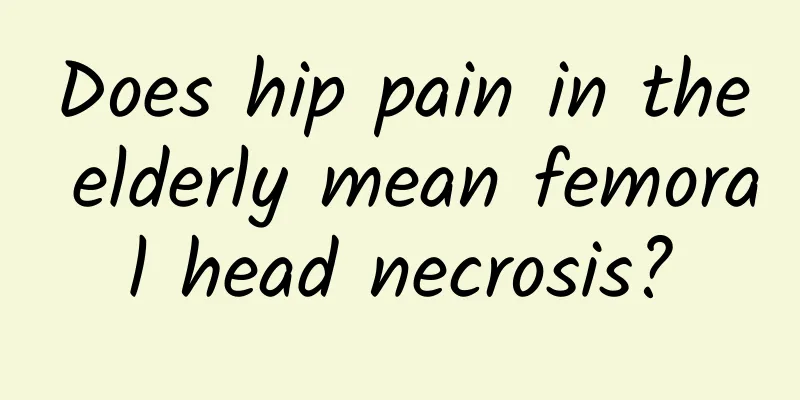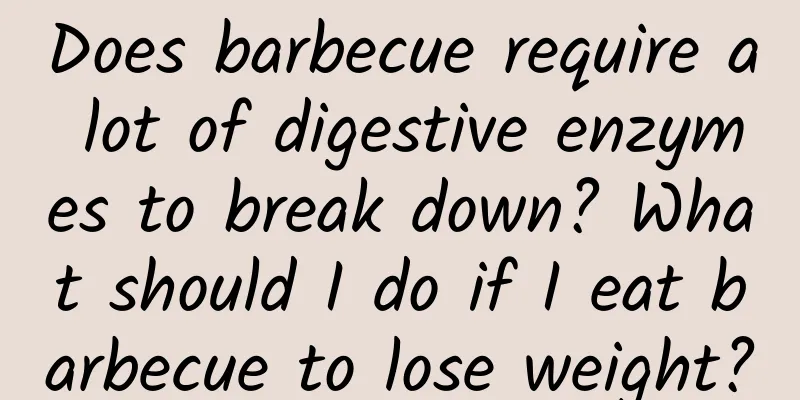Does hip pain in the elderly mean femoral head necrosis?

|
Author: Zhang Xin, deputy chief physician, Peking University Third Hospital Reviewer: Tang Qin, Deputy Secretary-General and Researcher of the Science Popularization Expert Committee of the Chinese Medical Association Many unexplained hip pains in the elderly are suspected to be femoral head necrosis, but in fact, the incidence of femoral head necrosis in the normal population is only about 1/1000. More than 60% of hip pain may be caused by another disease, that is, hip impingement syndrome. Figure 1 Copyright image is not authorized for reproduction 1. What is Hip Impingement Syndrome? Hip impingement syndrome, also known as femoroacetabular impingement syndrome, refers to a type of disease in which there is a mismatch between the acetabulum and the femur due to various reasons such as development, trauma, and hyperplasia. When the hip joint moves, there is abnormal friction and collision between the acetabulum and the femur, which leads to damage to soft tissues such as the labrum and articular cartilage within the joint. Simply put, some people often have abnormal bony protrusions in the junction area of the acetabulum and femoral head and neck (the bone between the femoral head and the femoral trochanter) of the hip joint. These bony protrusions can cause collision between the acetabulum and the femoral head and neck junction, leading to labral injury and osteoarthritis of the hip joint, causing pain. Figure 2 Copyright image is not authorized for reproduction Clinical manifestations of hip impingement syndrome The pain caused by hip impingement syndrome is mostly chronic pain in the hip joint, and some patients may have limited mobility. The pain is mostly dull pain and joint soreness. The pain is generally concentrated in the greater trochanter area on the outside of the hip joint. We can put our hands in a "C" shape and clamp them on the hip joint. The area affected by the entire "C" is the most common area of pain caused by hip impingement syndrome, which is also called the "C sign" clinically. Some patients may also experience pain in the knee joint, lower back, and sacroiliac joint area, but it rarely affects the area below the knee joint and above the waist. Symptoms may worsen or recur when patients walk for a long time, squat, lift their legs, stand up after sitting for a long time, or exercise vigorously. When there is a large-scale labral tear, the torn labral tissue may be stuck inside the hip joint, causing a locking sensation in the joint, which is clinically called the "dead leg sign." During physical examination, it is found that when the hip joint is in extreme flexion, internal rotation or external rotation, it may induce hip pain in patients with hip impingement syndrome. In severe cases, there will be limited movement and occasional popping. During auxiliary examinations, X-rays and CT scans can show abnormalities in the acetabulum, femoral head, and neck structure, as well as the site of impact, and MRI can show whether there is secondary labral injury. 3. How to prevent and treat hip impingement syndrome There are currently two main treatment methods for hip impingement syndrome: non-surgical treatment and minimally invasive hip arthroscopy. Non-surgical treatment is suitable for patients with relatively mild clinical symptoms and a short onset time (no more than 6 months). Treatment methods include limiting joint movement and taking medication. Patients should avoid excessive hip flexion (> 90°), such as crossing their legs, squatting or squatting; when doing yoga, cycling, breaststroke and other sports, they should also pay attention to the hip flexion angle. When the pain is severe, oral non-steroidal anti-inflammatory drugs or intra-articular blockade can be performed. Non-surgical treatment can temporarily relieve pain symptoms, but it cannot eliminate the impact factor and therefore cannot prevent the progression of joint degeneration. For those who do not respond to non-surgical treatment, surgical treatment can be considered, which involves repairing the damaged labrum under arthroscopy and removing the hypertrophic acetabular rim or bony protrusions of the femoral head and neck. Patients with hip impingement syndrome receive minimally invasive treatment, which results in less trauma and faster recovery. In summary, if the elderly experience unexplained hip pain, it is not necessarily femoral head necrosis, but may also be hip impingement syndrome. Therefore, it is necessary to seek medical attention in time, undergo a comprehensive examination, and receive symptomatic treatment. |
<<: Scientific prevention of respiratory infectious diseases
Recommend
Can I drink tea during menstruation?
Modern people pay more and more attention to heal...
What medicine can tighten the vagina?
After pregnancy, many women obviously feel that t...
What causes moderate cervical erosion?
Some women experience vaginal bleeding during int...
Picture of secretion during pregnancy
Every move of pregnant women during pregnancy is ...
What should I do if my leucorrhea is a little yellow and does not hurt or itch?
Vaginal secretions are a normal physiological nee...
Oxytocin after medical abortion
After medical abortion, if the abortion is incomp...
What aerobic exercises are suitable for pregnant women?
Pregnant women are a special group of people. The...
Efficiently crossing the blood-brain barrier? A breakthrough is coming for incurable brain diseases
Author: Xu Sijia, PhD, Kyoto University School of...
What causes migraine in pregnant women?
During pregnancy, women may develop diseases due ...
What to eat after abortion
Women must pay careful attention to take care of ...
Three physiological strictures of the ureter
The urethra tube connects to the renal pelvis abo...
Massage diagram of lobular hyperplasia
Lobular hyperplasia of the breast is a common gyn...
Does diarrhea in late pregnancy mean that the baby is about to be born?
In the late stages of pregnancy, expectant mother...
Does MRI have any effect on pregnant women?
Magnetic resonance imaging is a very common way t...









